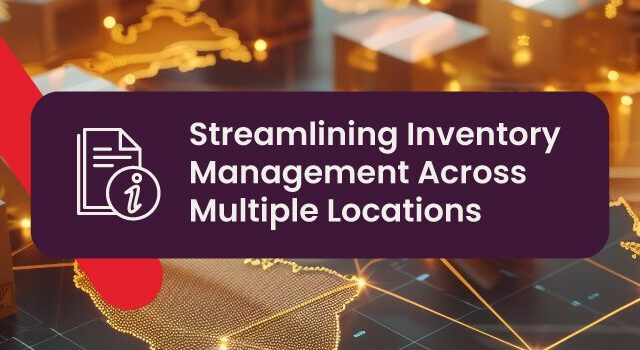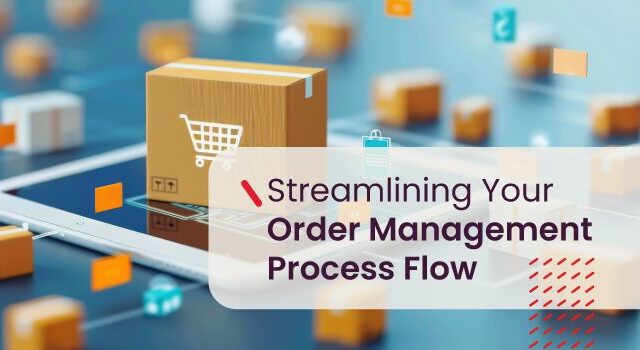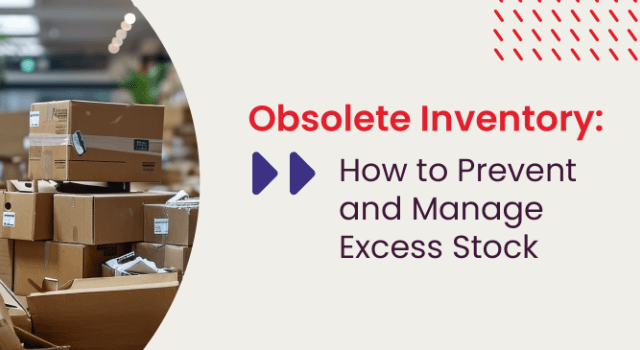Discover key demand forecasting processes to optimize operations, minimize costs, avoid stock-outs, and enhance customer satisfaction.
The customer lies at the heart of demand forecasting. Today’s demand planners must quickly understand the customer’s requirements, preferences, and behavior to make strategic choices regarding production, inventory, and distribution.
By accurately predicting future demand, businesses can reduce stock-outs, reduce long lead times, enhance product availability, and ultimately ensure their supply chain planning is customer-centric, geared to deliver the right products, at the right time, in the right quantities, and at the right locations.
In this article, we’ll explore the various methods and techniques used to improve demand forecasting, highlight the benefits of accurate forecasting, and provide practical tips to improve your demand forecasting processes.
Table of contents:
- What is demand forecasting?
- What’s the importance of demand forecasting in supply chain planning?
- Five trends impacting supply chains in 2024
- What supply chain KPIs inform demand forecasting?
- Supply chain demand forecasting techniques
- How to improve supply chain demand forecasting
- Discover how Netstock will elevate demand forecasting
1 What is demand forecasting?
Demand forecasting is the process of predicting the future demand for a product based on historical data, market trends, customer behavior, and other relevant factors. The objective of demand forecasting is to use predictive planning and analytics to provide an accurate estimate of the number of goods customers are likely to purchase over some time. Using the information, demand planners can estimate future sales and improve financial and capacity planning decisions.
Selecting the correct method of predicting demand for your supply chain will ensure you’re making the right decisions to meet demand.
2 What’s the importance of demand forecasting in supply chain planning?
Demand forecasting helps businesses make informed and data-driven decisions regarding production, inventory management, and resource allocation to meet customer demand, remain competitive, and maximize profitability.
Reduce stock-outs
Demand forecasting helps businesses determine the right amount of inventory to maintain. By accurately predicting future demand, businesses can avoid overstocking, which ties up capital and incurs storage costs, or stocking out, which leads to lost sales and customer dissatisfaction.
Efficient production planning
Demand forecasting allows businesses to plan their production schedules effectively. By understanding the anticipated demand, businesses can adjust their production levels, resource allocation, and procurement activities accordingly. This helps optimize manufacturing processes, reduce long lead times, and avoid production bottlenecks.
Increase visibility with suppliers
Reliable demand forecasts enable supply chain stakeholders to collaborate and synchronize their activities. Suppliers can align their production and delivery schedules with anticipated demand, leading to improved coordination, shorter lead times, and enhanced overall efficiency in the supply chain.
Avoid excess with better resource allocation
Demand forecasting helps businesses allocate their resources efficiently. Businesses can appropriately allocate workforce, machinery, and other resources by predicting future demand patterns. This prevents resource shortages or excess stock and allows for better utilization of available resources.
Improve financial planning
Accurate demand forecasts facilitate effective financial planning and budgeting. Businesses can estimate future sales revenue and align their budgetary allocations accordingly. It helps set realistic targets, manage cash flows, and make informed decisions regarding investments, marketing strategies, and expansion plans.
Increase customer service
Businesses can ensure high customer satisfaction by maintaining adequate stock levels, minimizing stock-outs, and fulfilling customer orders promptly. This leads to improved customer service and increased customer loyalty.
Risk management
Demand forecasting assists in identifying potential risks and uncertainties in the supply chain. Businesses should anticipate market fluctuations, changing customer behaviors, and other external factors by analyzing demand patterns and trends. This allows them to develop contingency plans, mitigate risks, and respond proactively to market dynamics.
3 Five trends impacting supply chains in 2024
External factors will continue to influence and disrupt supply chain planning. The global recession, global politics, inflation, and supplier or material delays will obstruct businesses from meeting demand. Another major factor impacting demand forecasting is the shift in consumer purchasing behaviors following the pandemic. Demand planners today must work with real-time data, leverage predictive analytics, and collaborate with cross-functional teams to effectively adapt their demand planning strategies.
Here are five trends to consider when approaching demand forecasting in 2024:
1. Changing consumer behavior
Consumer buying behaviors have drastically changed, becoming more digital, safety-conscious, value-driven, and environmentally conscious. As a result, demand planners need to consider the increased demand for online channels and optimize inventory levels accordingly.
2. An increase in nearshoring or ‘friend shoring’
This will continue so businesses can secure the supply of goods on time and in full to meet demand. This means you’ll need to review your current supplier network.
3. Supply chain visibility is non-negotiable
Leverage technology to gain full visibility of your supply chain operations to measure inventory levels, improve fill rate, and review safety stock levels and supplier performance. With increased visibility, you’ll quickly identify and address potential stockouts or excess stock before they become problematic and prevent you from meeting demand.
4. Prioritizing investing in predictive supply chain technology
Use technology to quickly model different scenarios to measure the impact and profitability of these scenarios on your supply chain.
5. More material shortages
Identifying your high-demand stock items will be essential for sourcing the right amount of materials while also developing a good relationship with suppliers.
4 What supply chain KPIs inform demand forecasting?
A supply chain Key Performance Indicator (KPI) is a measurable metric used to assess the performance and effectiveness of various supply chain activities. KPIs are typically aligned with a business’s strategic goals and objectives and help monitor key areas such as inventory management, procurement, and customer service. With full visibility to monitor and analyze supply chain KPIs, businesses can identify areas for improvement, make informed decisions, and optimize their demand forecasting processes to achieve better outcomes.
Visibility of these KPIs will enhance demand forecasting:
Stock holding
Inventory stock holding comprises all products or materials available in the warehouse or storage facility before they are sold or used in production. It’s influenced by customer demand, production lead times, and order quantities. Visibility of inventory stock holding is crucial for demand planning as it enables accurate forecasting, efficient allocation of resources, and timely fulfillment of customer orders. With visibility to quickly measure and monitor your stock holding, you can balance your inventory levels, ensuring you have enough inventory to fulfill customer orders promptly while avoiding excess stock that ties up capital and incurs storage costs. Your goal should be to bring your actual stock holding value as close to the model stock value as possible while increasing or maintaining your fill rate.
Fill rate
Your fill rate is like a measuring gauge, telling you how well you can service your customers with the available inventory. Fill rate measures the percentage of customer demand successfully fulfilled from available inventory and significantly influences demand forecasting. Firstly, it helps improve accuracy. A higher fill rate means incurring excess stock, and a lower fill rate could lead to potential stock-outs. By monitoring your fill rate, you can also identify patterns of demand variability and understand how much safety stock you need available for high-risk items with volatile demand or unstable supply. Delays or inconsistencies in receiving goods from suppliers can affect a business’s ability to fulfill customer orders. This can impact demand forecasting accuracy since it relies on reliable and timely supplier deliveries.
Replenishment cycle
The replenishment cycle, which refers to the time to restock inventory after sales, will impact demand forecasting. It influences lead time, stock-outs, overstocking, seasonality, demand variability, and supply chain efficiency. A longer replenishment cycle requires accounting for demand fluctuations during that time, while a shorter cycle allows for more frequent updates to demand forecasts. Seasonal patterns and trends must align with the replenishment cycle, and accurate forecasting helps optimize inventory levels. The replenishment cycle’s length directly affects supply chain efficiency, making it crucial to balance customer demand and inventory management.
Supplier performance
Visibility of your supplier network and monitoring how well your suppliers perform will impact the demand forecast. Unreliable lead times or stock arriving in fewer quantities from suppliers can lead to stock-outs and delays in meeting customer demand. Variability in lead times due to supplier performance can disrupt the supply chain and require adjustments to demand forecasts. Poor product quality from suppliers can result in returns and reduced demand, making forecasting challenging. Fluctuations in costs and pricing due to supplier issues can also impact consumer demand and purchasing behavior.
5 Supply chain demand forecasting techniques
By combining the qualitative and quantitative approach and other techniques, businesses can enhance their supply chain planning and optimize inventory levels, production schedules, and procurement strategies to effectively meet customer demand. Knowing which method to use plays a vital role in the success and competitiveness of businesses across various industries.
- Qualitative techniques: rely on historical data and past trends to predict future demand. Businesses can identify seasonal fluctuations, consumer preferences, and market trends that inform demand forecasts by analyzing patterns and trends in previous sales data.
- Quantitative techniques: involve expert opinion and market research. Experts provide insights and predictions based on their industry knowledge and experience. Market research involves gathering data on consumer behavior, economic indicators, and competitor analysis to make accurate demand forecasts.
Other demand forecasting techniques include:
- Scenario analysis: Using scenario analysis to forecast demand under different hypothetical scenarios. This allows planners to understand the potential impact of changes in variables such as pricing, marketing strategies, or external factors on future demand.
- Customer segmentation: Segmenting customers based on various characteristics such as demographics, purchasing behavior, and preferences. By analyzing the demand patterns within each segment, planners can forecast demand for different customer groups.
- Tracking leading market indicators: Identifying and monitoring leading indicators that strongly correlate with demand. For example, tracking economic indicators such as consumer confidence, employment rates, and housing market trends can provide insights into future demand patterns in the retail industry.
- Predictive analytics: leveraging advanced analytical techniques and machine learning algorithms to analyze large datasets and identify patterns and correlations can help planners better predict future demand.
It’s often necessary to use a hybrid approach to leverage the impact of each technique. Selecting the most appropriate demand forecasting technique will rest on which techniques best align with the business’s goals and data availability within your supply chain.
6 How to improve supply chain demand forecasting
Collaborate with customers
Staying close to your customers involves monitoring customer behavior, building relationships, leveraging customer data, and involving them in the forecasting process. By integrating customer data from sales records, loyalty programs, online transactions, and other touchpoints into forecasting models and analyzing this data, you can identify correlations, seasonality, and demand drivers that influence customer behavior, leading to more accurate demand forecasts. This customer-centric approach enhances demand forecasting accuracy and ensures supply chain operations align with customer needs.
Improve supplier relationships
With so much complexity in balancing inventory levels with supply and demand, the more you develop a good relationship with your suppliers and try stabilizing lead times, the more accurate your demand forecast will be. Suppliers also have their fair share of challenges. Regularly checking in with your suppliers gives you a better idea of what’s happening in their supply chain, and with real-time information, you can make adjustments if needed. You can also help your suppliers by giving them visibility of your forecast so they know in advance what stock you’ll need, so they can plan accordingly or flag any potential issues as they occur.
Tradeware can present their 12-month projected order forecasts to suppliers.
“Our suppliers find this invaluable for their planning, strengthening our relationships and paving the way for successful collaboration.” – Tradeware
Review and adjust demand forecasts
Continuous monitoring is crucial for demand forecasting improvement. Regularly reviewing forecast accuracy, tracking actual demand against forecasted demand, and analyzing the reasons for any discrepancies can help identify areas for improvement. This feedback loop allows for iterative adjustments and refinement of forecasting models and strategies.
“In the apparel industry, one pair of pants may have 200-250 available sizes when looking at all waist and inseam options. We use the statistical models and algorithms that Netstock suggests at the product level and then apply historical averages to develop forecasts down to the SKU level. – Edwards Garment
Use predictive supply chain planning software
Investing in supply chain technology that utilizes advanced analytics and machine learning algorithms can help improve supply chain demand forecasting. These tools analyze historical data, identify patterns, and make more accurate predictions, leading to improved forecasting accuracy.
Edwards Garment achieves a $900,000 reduction in inventory write-offs with Netstock.
Learn more about their incredible success
7 Discover how Netstock will elevate demand forecasting
Netstock’s demand planning functionality is a powerful tool for empowering demand planners to quickly adapt their forecasting models to keep pace with evolving market dynamics and shifting customer behavior. With this capability, you gain a granular view of demand at various levels, including individual SKUs, regions, and channels. You can forecast at any group level and in base units, price, cost, or margin. It goes beyond the surface and identifies outliers such as seasonality, promotions, and events, allowing you to make informed decisions.




